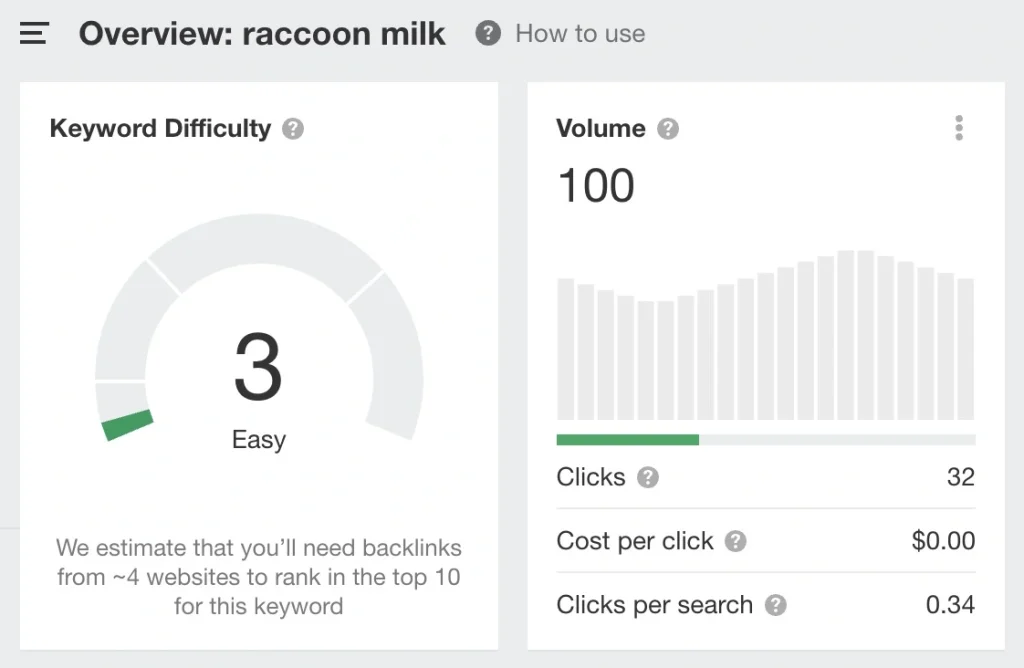It doesn’t matter how many words you use if they aren’t the right ones. Keyword writing can be the most powerful instrument in your marketing strategy — if it’s done the right way.
Matt MacMillan
CEO, MacMillan Design
If you’ve been writing a blog as content marketing for a while and not getting any traffic, you might be wondering what you’re doing wrong. You could be creating the most amazing, well-written, and engaging blog content on the web, but if your posts aren’t optimized for SEO (Search Engine Optimization), chances are that no one will ever find them. Why is that?
93% of online journeys begin with a search engine query, and Google owns 78% of that traffic. If you aren’t using the tools to speak Google’s language, the search engine won’t know what to do with your content. That means no ranking for your page, and therefore no visitors to your website. Google speaks in keywords, so to begin communicating, that’s where you want to start. Here are some tips to begin supercharging your content marketing and increase your chances of being on the first page of search engine results.
SEO is complicated, and most SEO companies are just as confused as you are. If you want real online traction and a partner committed to your success, you want MacMillan Design.
Keyword Writing: Speaking Google’s Language
A keyword is a phrase that people type into the Google search bar when they are looking for something. It could be as simple as “countertop water filter” or as complex as “19-inch white countertop water filter with a stand and a spout.” Google will look for these keywords in website content and deliver what it considers to be the most relevant results from its search. Those that best match the keywords will show up in the golden zone – page one. Page one websites get 95% of the clicks, so if your content shows up on page two you’re essentially picking up scraps. Page three and beyond? Well…good luck with that.
Some keywords have lots of competition. If you Google “healthy food” it has nearly 10 billion search results. While sheer volume of returns doesn’t always signify whether or not the keyword is harder or easier to win (more on that below), you can get a feeling for the amount of information on the web about that particular topic. If the people behind those web pages at the head of the list know what they’re doing, unseating them from the top spots will be nearly impossible for these high difficulty keywords. Other keywords have lower competition, giving newer, smaller websites a chance to hit the first page of search results and increase their traffic.
But still, you have to have a plan. You can’t name your article “The Best Flying Monkeys in Our Town” then write whatever you want and expect to win the “flying monkeys” keyword. Google’s wise to that, and won’t buy it.
To begin writing for SEO, you should have a basic understanding of keyword density. Following are some tips for using keywords effectively in your content marketing and some tools to help make finding them and calculating your density easier.
Keyword Density Writing Basics
Very simply, keyword density is the percentage of real estate a word or phrase takes up within your content. If it occurs once per 100 words, it will be 1%. Twice per 100 words, it will be 2%. But more is not always better, and the percentage you need to shoot for to boost your SEO will vary depending on the number of words in your total article. Even then, a particular percentage is not set in stone. (If they made it too simple, everyone would be doing it, right?)
Too Little, Too Much, and the Goldie Locks Zone
Obviously, if you don’t use your target keywords very often throughout your content it’s not going to register with Google that this is what your article is about. If you use it too much (generally in excess of 2.5%), it’s considered “keyword stuffing.” Keyword stuffing is a technique some websites have tried to get Google to see its keyword by using the keywords over and over in repetitive, sometimes nonsensical ways. In these cases, the keywords are so overused that Google detects foul play, creating really terrible results for your SEO. A website where keyword stuffing is found will get downgraded by Google instead of upgraded, making it harder, not easier, for users to find the page in a search.
So, what is the sweet spot? It will vary, but in general for an 800-word blog post you’ll want to shoot for about 2% keyword density in your content. The more words in your blog post, the lower the acceptable keyword density can be. If you’ve got 1500 words of content, less than 1% may still get you within Google’s sights and boost your website in the rankings.
Keyword Placement
To get the biggest bang for your keyword buck, you’ll want to use them logically. But you should also strategically use them in places that tell Google that this word matters in this article. Be sure to use your target keyword in your title tag and meta description, your H1 headline, and in your URL. Put extra effort into making the use of your keywords sound natural as you’re writing your content. This will pay off in both improving your SEO and delivering a better experience to readers visiting your website. The longer they stay with your content, the more Google registers that your site has value, and the better your chances of your content marketing resulting in conversions.
Keyword Difficulty

Keyword difficulty is an estimate of how hard it is to rank for a particular keyword. Keyword difficulty ranges from 0 to 100, with zero being easy to win and 100 being nearly impossible. For example, as of this writing, “keyword density” is a level 77 difficulty – very difficult. (In case you were wondering, “flying monkeys” is a 28, making it a medium difficulty word. If you’re going for the keyword “raccoon milk” you’re in luck – it’s a , which is easy! Yes, seriously.) But you’re probably wondering how to even find out how difficult a keyword is. Fortunately, there are great tools for that kind of research. AHREFS has a free keyword difficulty checker you can use to see if the keywords you have in mind are within the realm of possibility for your website to win.
When first starting out, you want to research and find keywords that are very low difficulty. Think 0, 1, or at most 2. This will give your content marketing the best shot at scooping up some of that web traffic. It may take some extra time and research to find that low-hanging fruit, but it will be worth it. Writing for those easier keywords will make it much more likely for your website to rank higher in search results.
Calculating Your Keyword Density
You can calculate the keyword density of your content on your own if you really want to, but it’s easier to use handy keyword density calculator tools. There’s a lot of them, but we like the one on CheckSerp.
To calculate the density of your keywords manually, count up the number of times your keyword appears and divide it by the total words in the article, then multiply it by 100. For example, if your keyword appears 11 times in a 1,000-word page, your keyword density is 1.1% (11/1,000 x 100).
The Problems with Keyword Density
All of that said, there are issues with using content keyword density alone as an SEO tactic. While it can be a good place to start, there are drawbacks that make it problematic. Here are some of them, and some tips to avoid them.
Repetitive, Repetitive, Repetitive
Using keyword density can often make the content of a blog or article feel repetitive, especially if you’re going for a keyword phrase that’s a little awkward, such as “circus animals for rent near me.” Readers can begin to feel like you’re repeating yourself…because you are. Once you learn about keywords, you can start to see exactly what keywords a blog or other type of content was shooting for when it was being written because that word or phrase is everywhere. This unnatural approach to writing can hurt your ability to effectively communicate your message to the audience and make your content marketing efforts a waste of time.
Long, Boring Content
Focusing heavily on keyword writing using density can also create a situation where you need to add more content than is genuinely necessary. If you’ve ever wondered why you need to scroll through a person’s entire childhood memory about desserts before you get to the peach cobbler recipe, that’s why. Without all of that back story in the content, you probably never would have found the page to begin with.
So you need more content to keep up with your keywords. You also need readers to scroll through your content to show Google your website is worth visiting. But you don’t want to bore and annoy users with your heartfelt peach cobbler story. SEO savvy bloggers have been looking for tips to both get what they want (an SEO boost) and deliver to readers what they want (good answers to their questions).
Some bloggers have solved this problem by including a “jump to recipe” button at the top of their content. This way, there’s a super-fast “scroll” through the content that registers with Google, yet readers don’t have to hear all about your grandmother if they don’t want to. Employing tactics like this can help you maintain the balance between the length of your content marketing writing and your readers’ patience.
Lower Success Rate
When it comes to SEO, keyword density doesn’t always get the job done. It’s becoming harder and harder to win keywords and get on the first page of search results based on keyword density alone. Search engine algorithms are getting smarter and working harder to deliver the very best results to users. This is great for people searching the net, but it makes the job of the small business website content writer much harder. Doing solid research and digging deep to find those low-difficulty keywords will be your best bet if you’re trying to improve your SEO and search rankings using density on its own.
A Better Way to Keyword Success
There is a better way to target (and win) keywords. That’s why at MacMillan Design we do not use keyword density for our clients’ sales pages, most blogs — and definitely not for our custom WordPress websites. We use a much more advanced technique that delivers natural-sounding content writing that still speaks Google’s language and is a pleasant experience for users. Did you even know our keyword for this article is “keyword writing”?
Winning on the web is a small business’s best chance at success, especially for small, local businesses. Customers are searching Google first for both local and national businesses and will buy from who they find there. Will that be you…or your bigger competitor? If you’re interested in having a website that works and content marketing that actually gains traction instead of gathering digital dust, give us a call today.




